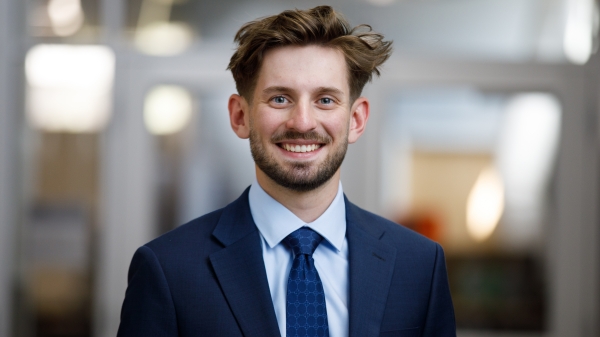ASU cosmochemist a pioneer in space dust analysis

ASU Associate Professor Maitrayee Bose poses with NanoSIMS 50L in a lab at Arizona State University. Courtesy photo
Although Maitrayee Bose always knew she’d be scientist, it wasn’t until she was a graduate student that she knew exactly what it was she wanted to study.
“At Washington University, they had a big group of cosmo-chemists who were probing the stars only with instrumentation in the lab, which was very enticing to me,” Bose remembers. Then, “a faculty member who was looking for students at that time told me about these meteorites that have really tiny stardust in them that cannot be seen with our naked eyes.”
Bose was hooked. From there, her love for instrumentation — and the space discoveries it can enable — only grew.
Today, Bose is among the many women around the world celebrating International Women in Engineering Day on June 23 as an associate professor in Arizona State University's School of Earth and Space Exploration, where she spends her time studying and teaching physics and astrophysics while investigating space dust at the nanoscale.
Written in the stars
Bose’s fascination with science, and astronomy in particular, began in childhood.
“Both my parents have a non-science background. But since I loved astronomy … they would bring me books from the library and cultivate that atmosphere at home,” she said.
The support Bose received from her parents ultimately led to the successful career she enjoys today. Among her many accomplishments, Bose oversees the $4 million NanoSIMS (nano-scale secondary ion mass spectrometry) instrument as part of the National Science Foundation-funded SIMS facility, which is used to study terrestrial and extraterrestrial materials.
“You can get a lot of information from studying the compositions of these tiny particles and meteorites,” Bose said. “When you study them with lab instrumentation, you study their chemical and isotopic composition, which can say something about the interior environment of the star; what kind of dust grains form and how they form.”
In addition to the NSF, Bose also credits organizations like NASA (which provides funding for research in novel areas such as NASA Innovative Advanced Concepts, the NASA Small Business Innovation Research/Small Business Technology Transfer program and others) and ASU’s NewSpace initiative for enabling her success.
“The NewSpace team led by Scott (Smas) and Jim (Bell) has always been full of ideas. … Any company that has a solid sample to measure, we've got an eye on,” Bose said.
Bose has taught physics at universities across the nation, as well as internationally, from St. Louis, Missouri, to her hometown of Pune, India. As an educator, she works to engender her same enthusiasm for scientific discovery in all her students.
“Being in this position allows me to get more people interested in what I do in the sciences,” she said. “I love it when students change their field of research to work with meteorites and samples brought back from asteroids through sample return missions. It just amazes me that this can actually happen in my role as an educator.”
More Science and technology

Cracking the code of online computer science clubs
Experts believe that involvement in college clubs and organizations increases student retention and helps learners build valuable social relationships. There are tons of such clubs on ASU's campuses…
Consortium for Science, Policy & Outcomes celebrates 25 years
For Arizona State University's Consortium for Science, Policy & Outcomes (CSPO), recognizing the past is just as important as designing the future. The consortium marked 25 years in Washington, D…

Hacking satellites to fix our oceans and shoot for the stars
By Preesha KumarFrom memory foam mattresses to the camera and GPS navigation on our phones, technology that was developed for space applications enhances our everyday lives on Earth. In fact, Chris…